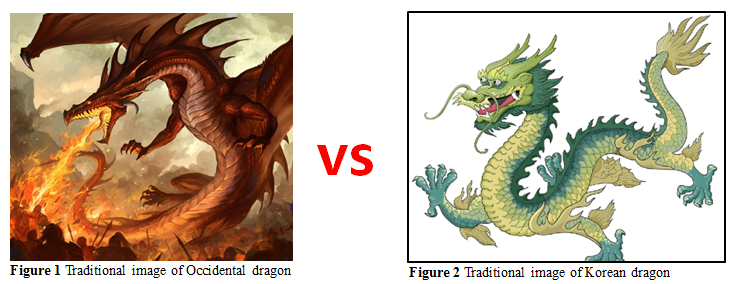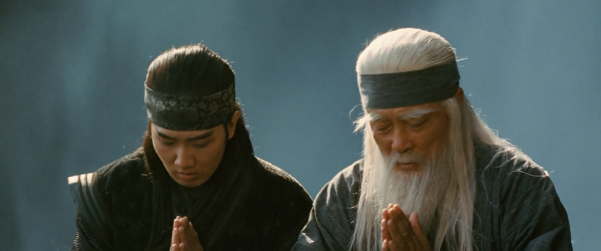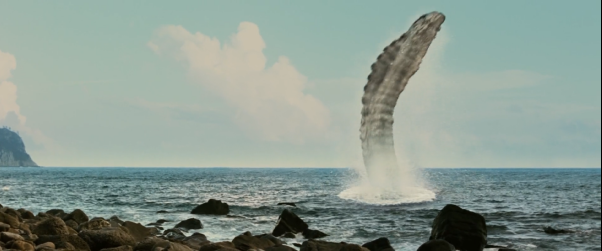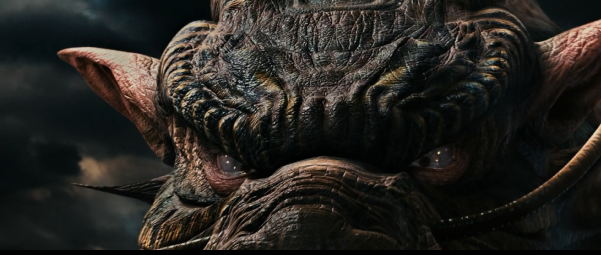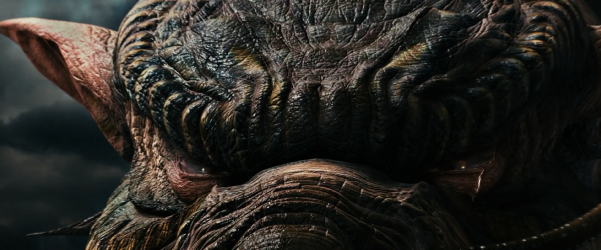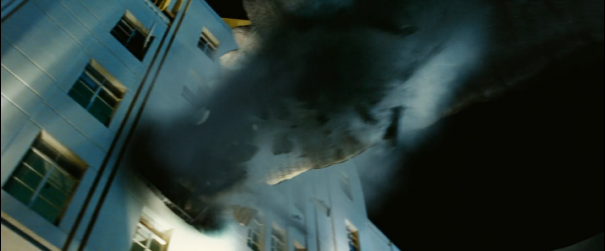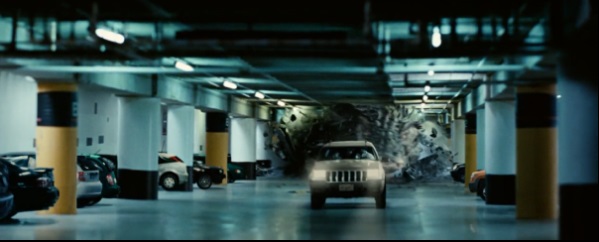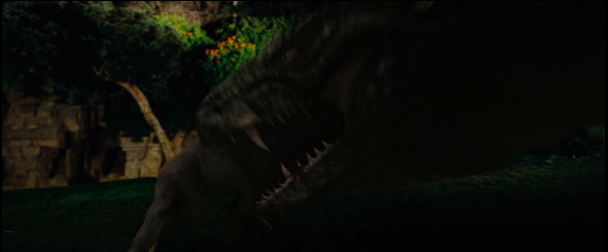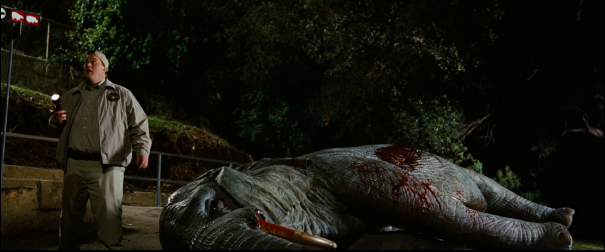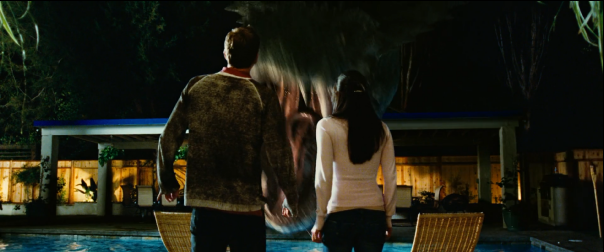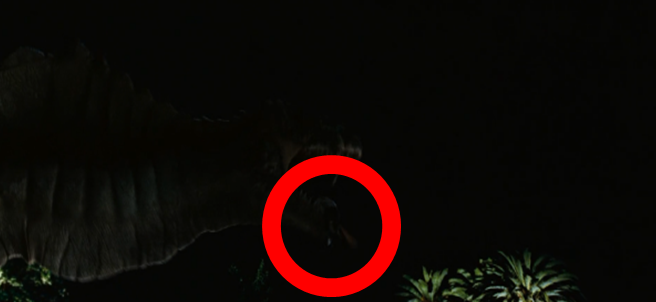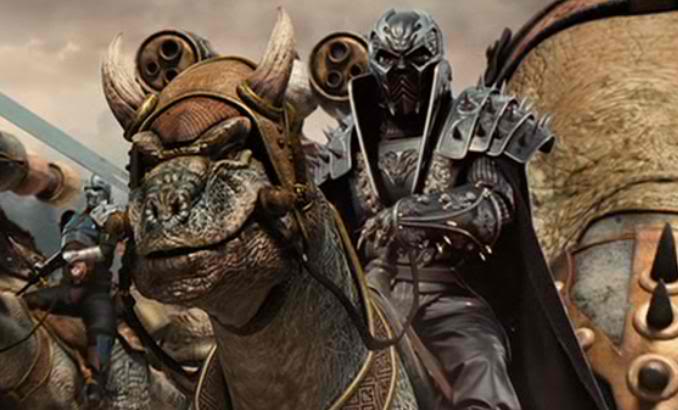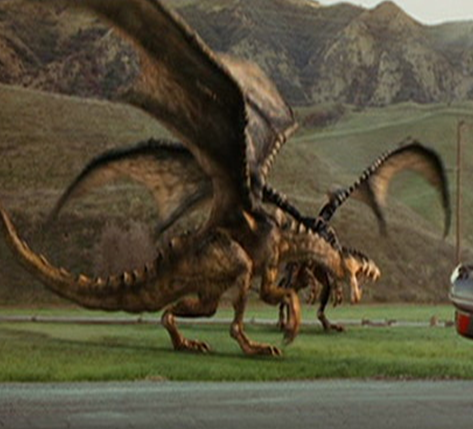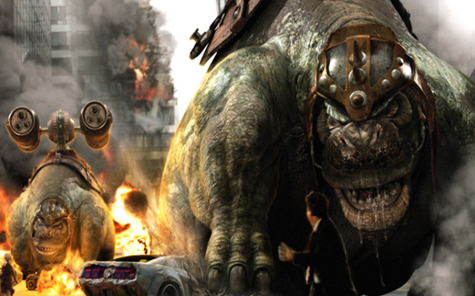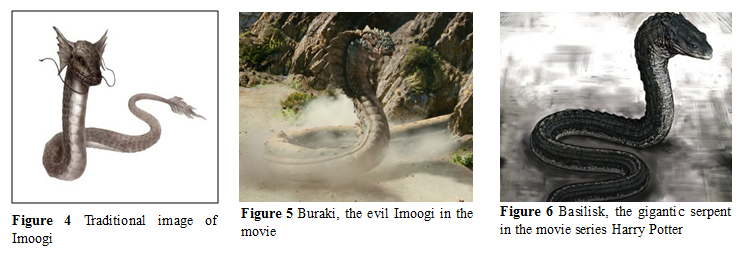The movie, D-War : Dragon Wars, begins with introducing the Korean legend of the ascension of Imoogi, a gigantic pre-dragon stage serpent. Every 500 years, one good Imoogi was rewarded with a chance to become a dragon, and it had to receive the gift of the Yuh-yi-joo, a magical pearl from heaven, to become a dragon. The power of Yuh-yi-joo was given to a girl, also in every 500 years and it was completely formed when she became 20. At that point, any Imoogi that possessed Yuh-yi-joo could be a dragon. Therefore, the evil Imoogi, Buraki, coveted Yuh-yi-joo, too. In 1507, the year when Narin, the girl with the power of Yuh-yi-joo, was born in Korea, the best warriors of heaven, Haram and Bochun, were sent to protect her. However, after 20 years, Haram and Narin, falling in love with each other, defied their fate and died in the hand of Buraki. And the incomplete fate of each character repeats in L.A, 2007. Haram was reborn as Ethan, Narin as Sarah and Bochun as Jack. And Ethan accidentally knew his fate when he was young. After 20 years, Ethan and Sarah finally find each other and try to overcome their fate while the Buraki is following them, destroying the city. They realise that they cannot change the fixed fate, and Sarah sacrifices herself to the good Imoogi. After that, it turns into a celestial dragon and the peace of the world has finally arrived.
D-War : Dragon Wars (2007) mixes the dragon legend of Korea and the contemporary circumstance of the United States in a monster-genre narrative. The movie has received negative reviews from critics in regards to the plot of the movie being rather close to that of a B-movie, and that the story does not have much probability. However there a few points that are notably interesting about this movie. First, how the Korean dragon complemented the culturally disparate modern America in the movie. Secondly, how other imaginary animals, that have no connection with neither dragons nor Korean legends, are portrayed. Lastly, how a dragon was used in the nationalist marketing method of this movie, and why this was successful.
A mythical animal, dragon, can be found in most of the folklores and myths all over the world. However, the image of the dragon in East Asian mythologies is quite different from the one in Occidental mythologies. In Occidental mythologies, dragons are usually portrayed as evil creatures, which spit fire and are usually slain by the heroes. On the other hand, in East Asia, a dragon is the symbol of protection and power, which controls the rain and cloud and usually lives in water. A dragon is regarded as the guardian of people and that is why the sculptures of dragon are often found in palaces. In particular, in Korea, there is a unique characteristic of dragons which is closely related to the dragons in this movie. It is the existence of Imoogi phase. As described in the movie, the Imoogi is the phase that a dragon goes through before becoming a true dragon. Usually, it takes a long time until the Imoogi becomes a dragon and it needs the Yuh-yi-joo, a magical pearl, to ascend as a dragon. This Imoogi myth is the main motive of the movie, where two Imoogis fight for one Yuh-yi-joo, to be the only dragon.
There are two Imoogis feature in the movie, the good Imoogi and the evil Imoogi, Buraki.
It is clearly shown that the good Imoogi is the guardian of the Earth, as it welcomes Haram and Bochun with its tail when they visited it to introduce themselves as the warriors from heaven.
Also, when Sarah sacrifices herself as Yuh-yi-joo to the good Imoogi to save the world, a close-up shot of the good Imoogi, shedding tears, indicates that it is not a mere animal-like monster and can feel empathy to other creatures. In general, shedding emotional tears is regarded as what only human being can do. The fact that the good Imoogi is moved to tears shows that it has the ability to understand the human world, though speechless.
On the other hand, Buraki does not show any human-like behaviour and it rather looks like a monster which destroys everything to achieve its goal. The concept of the evil Imoogi, Buraki, actually does not exist in the original Imoogi myth. Buraki is a virtual creature just made for this movie by scenario writers, and it seems much closer to the Occidental dragon than the Korean dragon, as it is the antagonist of the main characters. The dichotomous characteristics of being good and evil of the two Imoogis are quite obvious in the movie.
Between the two Imoogis, only Buraki appears in the center of L.A. to find out where the Yuh-yi-joo girl is located. While moving around the city, Buraki is portrayed as if it is a B-movie monster. When the Buraki attacks some creatures, including human, the process is frankly shown.
For instance, when the Buraki attacks an elephant at night, the elephant being in Buraki’s mouth, bleeding and being thrown, is shown in a brutal way, even the eyes of the dying elephant.
The same thing happens when the Buraki raids the house of Sarah’s friend. Right after the surprised face of the friend, the Buraki immediately puts her into its mouth, and this scene is so detailed that the audience even can recognise her wriggling body in agony. It seems the scenes are put into the movie to show the cruelty of the Buraki, setting up its characteristics clearly in the beginning of the movie.
Other than Imoogis, different numbers of imaginary animals feature in the movie. These animals play roles as members of Atrox soldiers, subordinates of Buraki. What is interesting of these animals is that there is no link between them and Korean mythology, and in this context, their appearance is somewhat random. There are three types of imaginary animals in Atrox soldiers.
Shaconne Bulco Dawdler
First of all, there is a cavalry similar with a theropod, ‘Shaconne.’ Shaconne is used as a transportation system of the Atrox soldiers, like a horse does for human beings. It was intended to make it look similar with a primitive horse and dinosaur. Secondly, there is a small flying dragon, ‘Bulco.’ Though the main animals of this movie are the Korean dragons and the main plot is based on Korean mythology, the appearance of a Bulco is rather close to that of an Occidental dragon, with huge wings compared to its size and the short length of the body. And it is clearly stated in the concept art of the movie that the appearance of Bulco is based on the Occidental dragon. Lastly, a giant reptile ‘Dawdler’, with rocket-launchers on its back, appears in the army. Dawdler, as it can be guessed at its name, it is a slow and heavy creature, mainly used as a means of carrying huge rocket-launcher. The motive of the Dawdler was derived from the appearance of sea elephant and sea lion. Originally, it was planned to look more like a primitive alligator-like dinosaur, but it was changed later to balance with other characters. The combination of these three imaginary animals and the Atrox soldiers is seen harmonious, rather than unnatural. They remind of the giant armies with a number of imaginary animals in the movie series, Lord of the Rings. However, considering the main plot of the movie, the concept of each imaginary animal is hard to understand. These speechless animals are mere enemy monsters of the main protagonists and beasts which act on their instinct. There is not any communication between them and other creatures.
The most interesting part of this movie is the motive of the production of the movie and the nationalism marketing strategy, and dragons and Imoogis in the movie play important roles in both of them. The former popular comedian of Korea and the director of the movie, Hyung-rae Shim, had aspired to make a monster movie only with domestic technologies and wanted to prove that this kind of movie can be as high-quality and successful as Hollywood movies. In 1999, he made a monster movie Yonggary with this motive, but still he desired to put some elements of Korean culture into his movie, which were not in Yonggary. Therefore, what he chose was the Korean Imoogi and dragon mythology, which can be used both for his main genre of the movie, monster movie, and for the emphasis that it is made in Korea only with the domestic technology. This motive was also emphasised in advertising of the movie – so-called nationalism advertising. As a means of nationalism marketing, Imoogis and dragons are good sources as the legend of the Imoogi, which turns into dragon after struggling for a long time, can be the metaphor of director himself, who has continuously challenged to make his own unique monster movie from scratch by himself. This metaphor becomes obvious due to the message that the director inserted at the end of the movie, saying that D-War : Dragon Wars and himself would not fail in the world market, and the patriotic atmosphere was inspired more because of the background music, ‘Arirang’, the most famous Korean folk anthem. This tactic of using dragon mythology as a marketing strategy succeeded in Korea, making a big hit of the movie.
At the same time, his aim was to enter Hollywood with this movie. Therefore, the background of the movie was selected as contemporary L.A, which is quite disparate from medieval Korea, and it was actually released in the United States. In the United States, the film grossed $5 million on 2,275 screens in the opening weekend and has grossed $10,977,721 in the United States in total, making it the highest-grossing Korean-made film released theatrically in the United States at that time.
This explains why the Imoogis and dragons in the movie do not look like the ones portrayed in Korean mythology. Traditionally, the appearance of dragon is described as the mixture of nine animals – the nose of pig, the eyes of rabbit, the head of camel, the ear of cow, the horn of deer, the toenails of hawk, the neck of snake, the scales of carp and the fist of tiger – and the similar portrayal, with some parts missing such as the fist, is applied to the Imoogi as it is a less grown dragon. However, to make Imoogis more familiar and less awkward to the foreign audience, the image of Imoogis and dragons in the movie is quite far from the description above. They rather look like gigantic serpents, for example, Basilisk in the movie Harry Potter series. This is also because Buraki, the evil Imoogi, does not fit with the traditional image of dragon in Korea, which controls rain and clouds and guards the whole world.
Overall, there are a number of points that cannot be explained and do not make sense in this movie – from the awkward appearance of Imoogis and other imaginary animals, which does not fit with the Korean dragon mythology, to the unnatural insertion of random elements of Korean mythology and traditional culture, including Korean dragons and Imoogis, for nationalism marketing strategy, but still D-War : Dragon Wars (2007) is a monumental film which opened a new horizon to a unique movie genre, Korean monster movie and showed how traditional Korean elements can be mixed up in universal narrative. Without considering the economic success of the movie, it is an interesting film that has never been found in the film history of Korea.
For further information, you can check the links below :
1. About the various meanings and appearance of the dragon around the world
https://en.wikipedia.org/wiki/Dragon#cite_note-146
2. About the origin and further description of Shaconne, Bulco and Dawdler
https://non-aliencreatures.fandom.com/wiki/Shaconne
https://non-aliencreatures.fandom.com/wiki/Bulco
https://non-aliencreatures.fandom.com/wiki/Dawdler
3. About dragon folktales and mythologies around the world (Dragon and Dragon Lore by Ernest Ingersoll (1928))
http://www.sacred-texts.com/etc/ddl/index.htm
Bibliography
Box Office Mojo., (2019). Dragon Wars Box Office Mojo Listing [online]. Box Office Mojo. [Viewed 2 January 2019]. Available from: http://www.boxofficemojo.com/movies/?id=dragonwars.htm
Chun.S.,(2007). D-War” scores with nationalism. JoongAng Daily[Online].August 16. [Viewed 4 January 2019]. Available from : http://koreajoongangdaily.joins.com/news/article/article.aspx?aid=2879348
Fee, C. R,. (2011). Mythology in the Middle Ages: Heroic Tales of Monsters, Magic, and Might, Praeger Series on the Middle Ages. Santa Barbara, California, Denver, Colorado, and Oxford, England : Praeger.
Wallace, B., (2007). In South Korea, patriotism rears its dragon-like head. Los Angeles Times[online]. 15 October. [Viewed 4 January 2019]. Available from : http://articles.latimes.com/2007/oct/15/world/fg-deewar15
